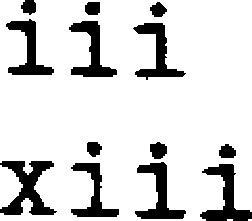232
BM2
Yes, the Maths and Science curriculum have
to change for multi-cultural.
CMl Has it?
BM2
Well ,
1 would say
for
example
using SMILE
in School B is all part of the notion that
you treat everybody equally - that’s behind
Mixed Ability teaching and SMILE being a
way in which the Maths Department are trying
to do it. It’s all interrelated - it’s very
difficult to isolate one particular bit of
a school. You’ve got to take it all into
consideration.

BSS2
I think I’d argue that the philosophy behind
that sort of pluralist conception of multi-
cultural is
- if that’s
implications
any subject.
essentially an egalitarian one
your
motivation

has wide
for how you teach anything,
BM 2
But having that sort of philosophy as you
have would incorporate the sorts of examples
that CMl has given. You would have black
kids in your examples. In Maths it is important.
CMl
Yes ,
concretely it’s
been bad in the past
that
all the examples
are white or
take
sexism
as another example.
In Maths problems I
can think up one in statistics. Now I think
you ought to stop that as you should little
black Sambo - but Maths as it is, I don’t
think that apart from the improvements that
came along with mixed ability teaching and
teaching people more equally than in the
past I just can’t
see
that
Il
Ulti-Cultural
education can have
such a contribution as
in other subjects.


Yes but
haven*t the
materials used got impli-
cations for the whole ethos and the way that
it's taught and it happens in the Social
Sciences as well.
CSSl
Yes but I think Ml was thinking, and we all
were, of how can Maths currently contribute

that’s not
Iilti-Cultural
education and

CSS2 So the conversation before was important
B Now how are we seeing it?
Tutor
More intriguing information
1. Indirect Effects of Pesticide Regulation and the Food Quality Protection Act2. Pricing American-style Derivatives under the Heston Model Dynamics: A Fast Fourier Transformation in the Geske–Johnson Scheme
3. Ronald Patterson, Violinist; Brooks Smith, Pianist
4. The name is absent
5. EXECUTIVE SUMMARIES
6. Group cooperation, inclusion and disaffected pupils: some responses to informal learning in the music classroom
7. Benchmarking Regional Innovation: A Comparison of Bavaria, Northern Ireland and the Republic of Ireland
8. The name is absent
9. The name is absent
10. ENVIRONMENTAL POLICY: THE LEGISLATIVE AND REGULATORY AGENDA